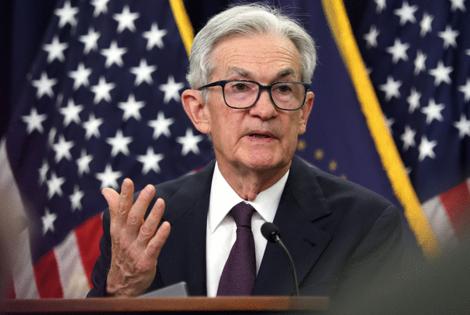Fed's Powell says rate path unclear but tariff impact is coming
Published in News & Features
There are a lot of unknowns about the outlook for the economy and interest rates, but Federal Reserve Chair Jerome Powell signaled at least one thing seems certain: Higher prices are coming.
Policymakers voted unanimously to hold interest rates steady for a fourth straight meeting Wednesday as they await clarity on whether tariffs will leave a one-time or more lasting mark on inflation. Powell said it’s still unclear how much of the bill will fall on the shoulders of consumers, but he expects to learn more about tariffs this summer.
“Ultimately the cost of the tariff has to be paid, and some of it will fall on the end consumer,” Powell said. “We know that’s coming, and we just want to see a little bit of that before we make judgments prematurely.”
But policymakers’ latest economic projections suggest a growing divide on the committee. While the median forecast in the so-called dot plot continued to show two rate cuts this year, seven officials now see no reductions in 2025. That compared with 10 policymakers who foresee two or more.
“They were unanimous in terms of not doing anything right now, but I think they’re divided in terms of how they view the risks,” said Priya Misra, portfolio manager at J.P. Morgan Asset Management. “I think the division in the dots for 2025 comes down to how different participants view the persistence of inflation.”
Asked about the division in officials’ rate projections, Powell downplayed it. Given the high level of uncertainty in the economy, he said, “No one holds these rate paths with a lot of conviction.”
Path ahead
For some time policymakers have been expecting higher unemployment and inflation as a result of President Donald Trump’s policy changes, particularly around trade. Several officials, including Powell, have highlighted the central bank’s commitment to ensuring price pressures don’t become more persistent.
So far, the economy has proved resilient, with inflation rising less than expected in recent months and unemployment holding steady. Uncertainty has diminished, officials said in a post-meeting statement, but it remains elevated. The Fed chief emphasized policy should be forward looking, adding that officials are beginning to see some effects from tariffs but expect more over the coming months.
While forecasters expect a “meaningful” rise in inflation, Powell said the jobs market isn’t “crying out for a rate cut.”
“He could have taken a lot of comfort from the fact that the inflation readings have been muted,” said Misra, but she added, “they expect it to show up in higher prices down the road.”
Fed watchers will get another chance to hear Powell’s thoughts on the economy and the outlook next week when he’s scheduled to testify before lawmakers.
Updated forecasts
Policymakers dropped a line from the previous statement that said risks to both unemployment and inflation had risen. Yet, the median estimate now shows the Fed’s preferred price gauge rising 3% this year, up from the 2.1% increase seen in the year through April. Meanwhile, officials downgraded their estimates for economic growth in 2025 and lifted their forecast for unemployment slightly.
Investors see more than a 70% chance of a rate cut in September, according to interest rate futures. But most economists say it could take until at least then to understand the impact of trade, immigration and spending policies, according to a Bloomberg survey, and policymakers don’t appear to be in a hurry.
“The Fed is very much on the sidelines, they’re waiting,” said Stephen Stanley, chief economist at Santander U.S. Capital Markets. “Maybe by September we’ll have some answers. That’ll be the best case at this point.”
(With assistance from María Paula Mijares Torres, Catarina Saraiva and Jonnelle Marte.)
©2025 Bloomberg L.P. Visit bloomberg.com. Distributed by Tribune Content Agency, LLC.







Comments